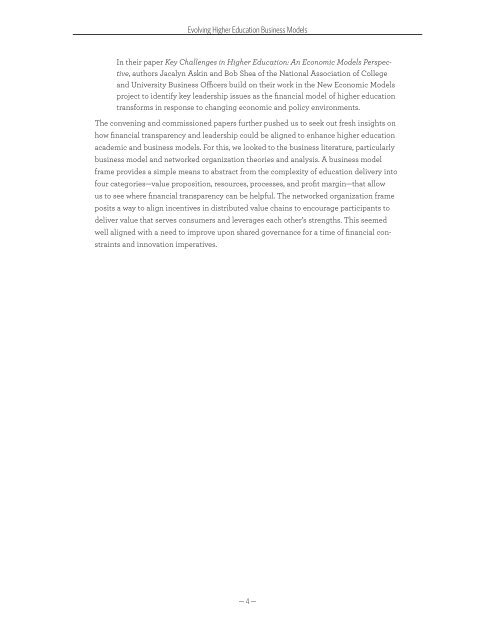Evolving Higher Education Business Models
Evolving-Higher-Education-Business-Models
Evolving-Higher-Education-Business-Models
Create successful ePaper yourself
Turn your PDF publications into a flip-book with our unique Google optimized e-Paper software.
<strong>Evolving</strong> <strong>Higher</strong> <strong>Education</strong> <strong>Business</strong> <strong>Models</strong><br />
In their paper Key Challenges in <strong>Higher</strong> <strong>Education</strong>: An Economic <strong>Models</strong> Perspective,<br />
authors Jacalyn Askin and Bob Shea of the National Association of College<br />
and University <strong>Business</strong> Officers build on their work in the New Economic <strong>Models</strong><br />
project to identify key leadership issues as the financial model of higher education<br />
transforms in response to changing economic and policy environments.<br />
The convening and commissioned papers further pushed us to seek out fresh insights on<br />
how financial transparency and leadership could be aligned to enhance higher education<br />
academic and business models. For this, we looked to the business literature, particularly<br />
business model and networked organization theories and analysis. A business model<br />
frame provides a simple means to abstract from the complexity of education delivery into<br />
four categories—value proposition, resources, processes, and profit margin—that allow<br />
us to see where financial transparency can be helpful. The networked organization frame<br />
posits a way to align incentives in distributed value chains to encourage participants to<br />
deliver value that serves consumers and leverages each other’s strengths. This seemed<br />
well aligned with a need to improve upon shared governance for a time of financial constraints<br />
and innovation imperatives.<br />
— 4 —


